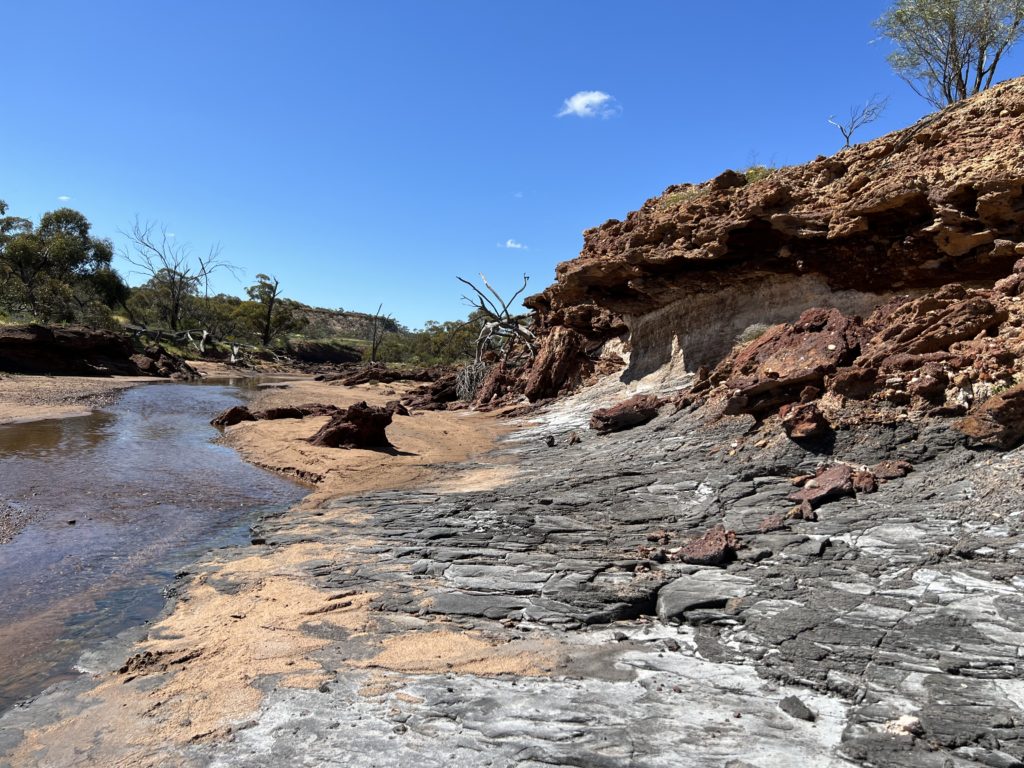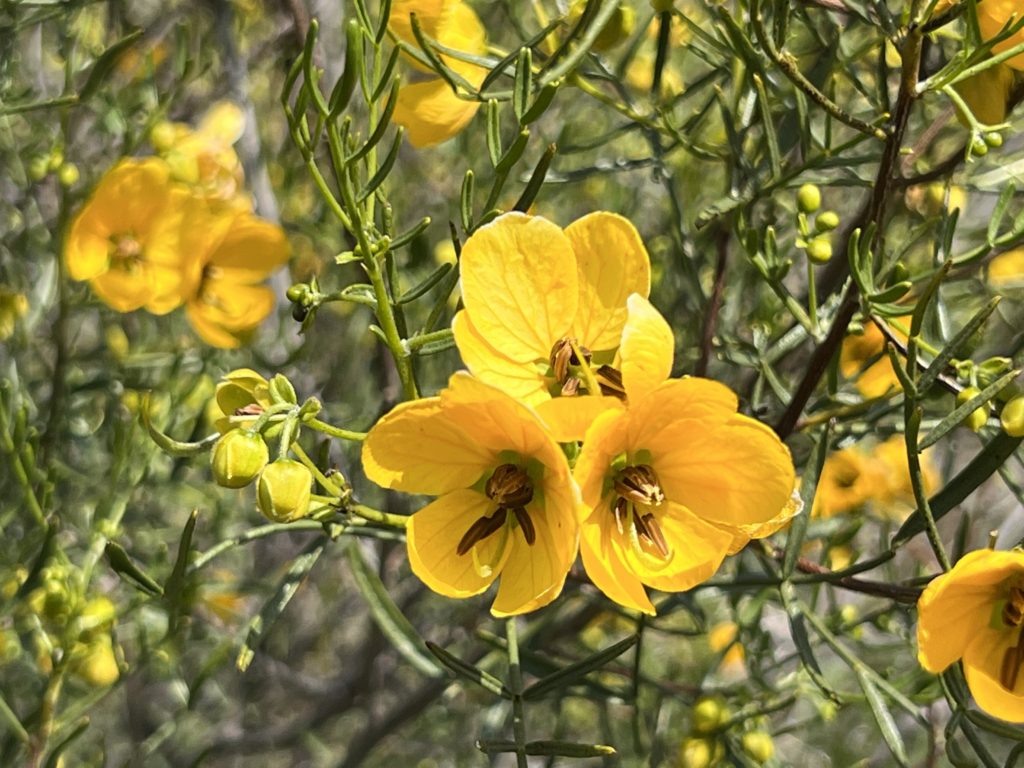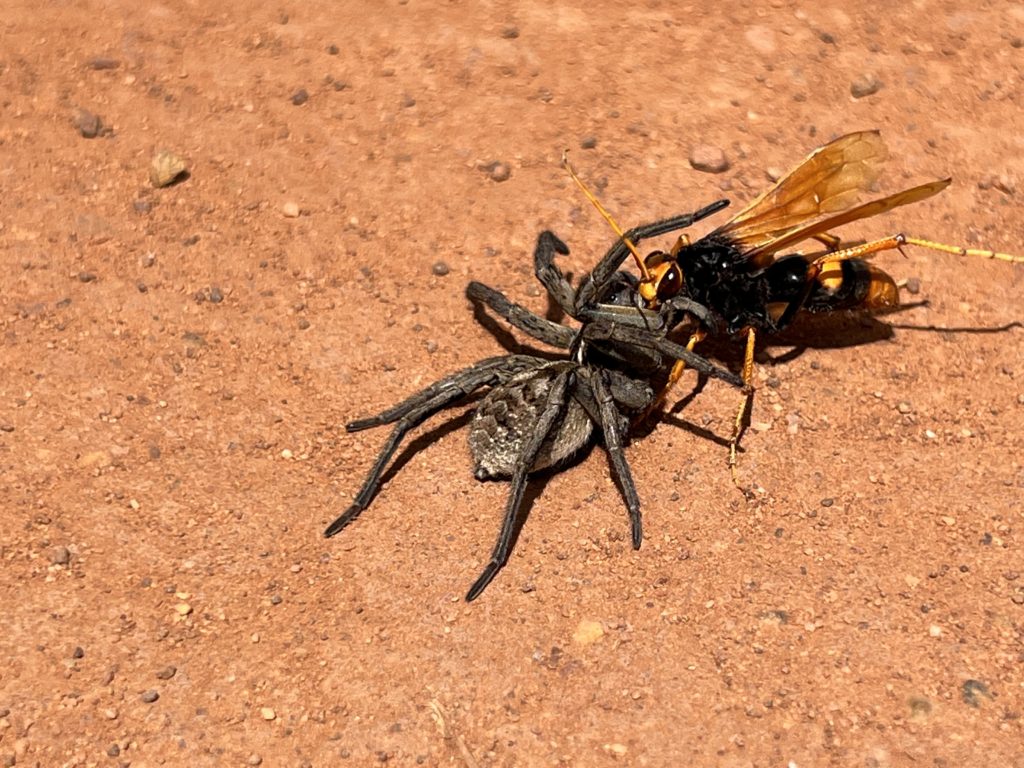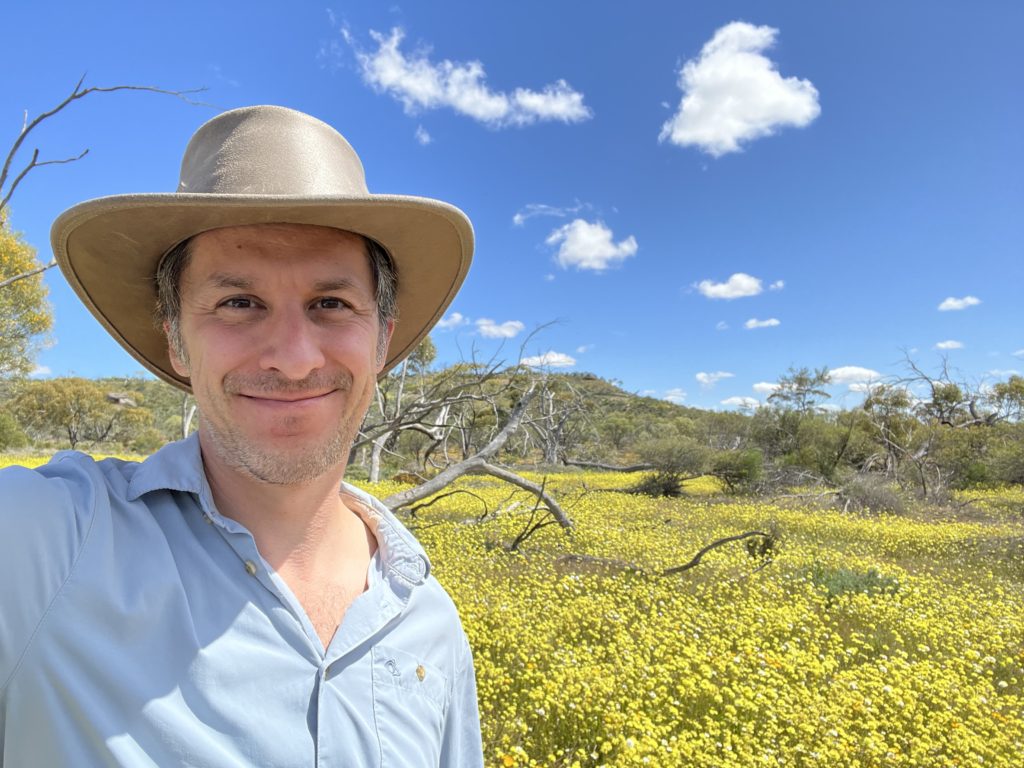17 September. Last night we arrived late to the Coalseam campground and as we set up for the night, a pair of reddish eyes looked back from the bush. A small kangaroo laid still in the branches just off the path. The night sky cleared out and treated us to some stunning views of the milky way.

Today we wake up to a cool but sunny morning. We are on the bowl of a small valley of Australian bush surrounded by agricultural fields that hide beyond the edge of the valley. A thing line of coal cuts through the river bed at the bottom of the valley. Too thin to be commercially viable, a small pile of mine tailings and a closed down shaft is all that remains of the old mine. Before we start our drive, we decide to explore the trail up the valley rim, almost just for fun. and then, just across the river we strike gold.
Scattered not far from the trail’s edge, bushes full of golden flowers hold a surprise for us. The buzz-pollinated flowers of Senna artemisioides, in the pea plant Fabaceae, are at their peak. This is an amazing flower that has the typical poricidal anthers, the tube-like anthers that closely guard pollen grains. But within each flower there are two types of anthers in this species, a short set that attracts and feeds pollinators, and a second set of longer anthers that sneak underneath or besides the pollinator and showers them with pollen to fertilise flowers. These so called heterantherous flowers, have evolved many times in disparate groups.
The flowers of S. artemisioides (silver Senna) are thus buzz pollinated and heterantherous, and we soon start hearing the high-pitched sounds of buzz pollinating bees. We set in catching bees to measure in the Buzz Bus, and soon David and I have collected enough to keep us busy for a few hours. We do a couple more trips of collecting and measuring bees. there are many beautiful black bees with blue abdomens and they obligue and give away their defense buzzes. The data flows in through the accelerometer, and we get many minutes of bee buzzes for our library. As we continue exploring and measuring, we notice that there are at least three species or subspecies of Senna that differ in flower size, level of heteranthery and leaf size and shape. The bee highlight, though, is a large and beautiful bee wish a bronze thorax and black abdomen. Measuring this one requires extra care and wearing some cow hide gloves to avoid its sharp stinger. a true buzz pollinating champion.



After the best day so far for data collection, we round it up with views of the coalseam river, a small flock of green budgies, galahs, and a very large black cockatoo. We run into some friends of David, and we tell them about the Buzz project, eat together and sit around the fire eating marshmallows that they kindly share with us. We stayed in the communal fire for a while, watching the southern cross in the sky, Alfa Centauri, Jupiter, Scorpion, and hearing stories from the old timers that relish telling about naive explorers that have found that travelling in the Australian outback is more challenging than expected.
— They didn’t think their truck will get stuck in the sand— says Tony, as he recalls when they had to bail a pair of city dwellers in a two-wheel drive from an off road track—well, you are stuck now!
We decide to stay another night in this lucky place.
